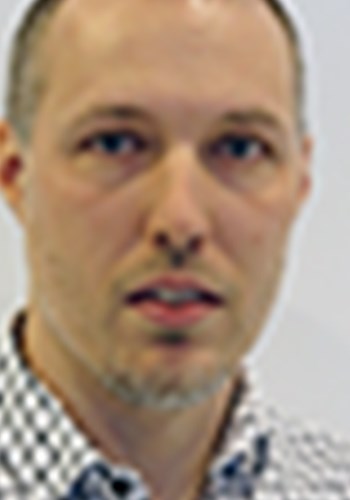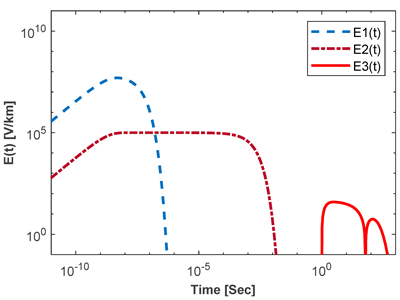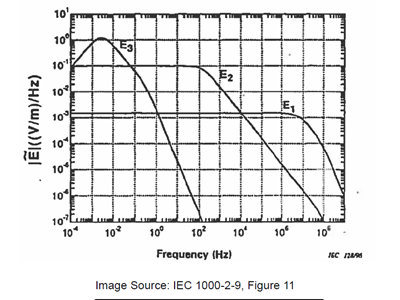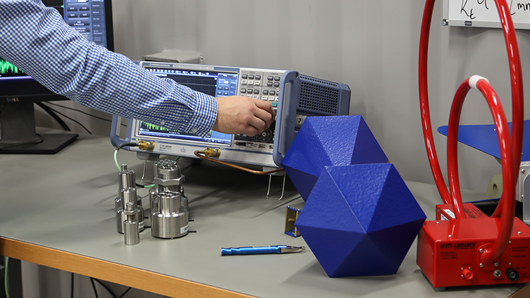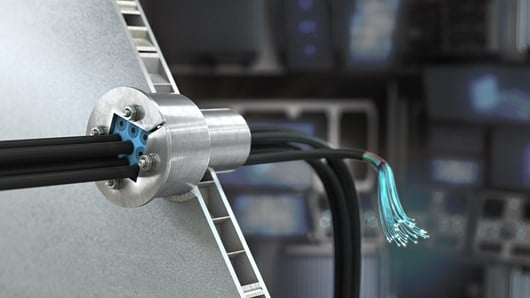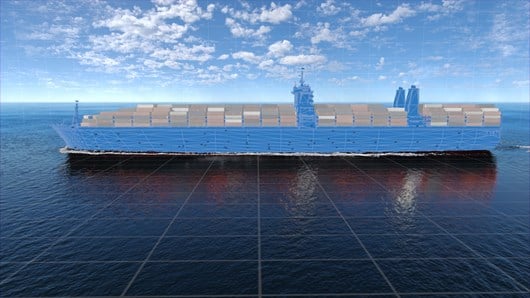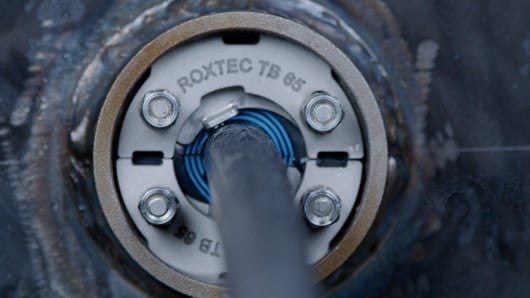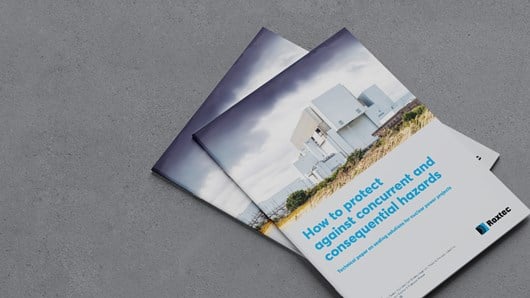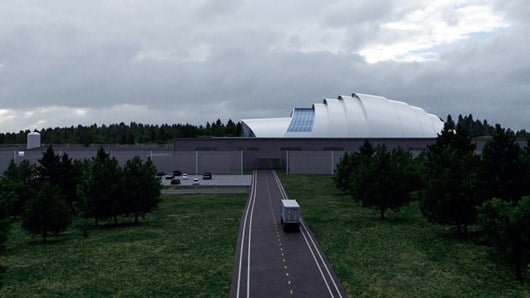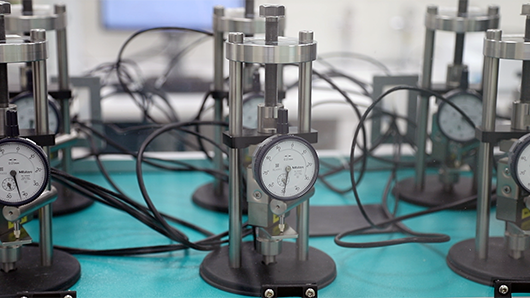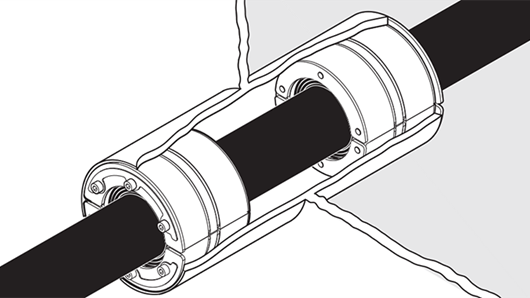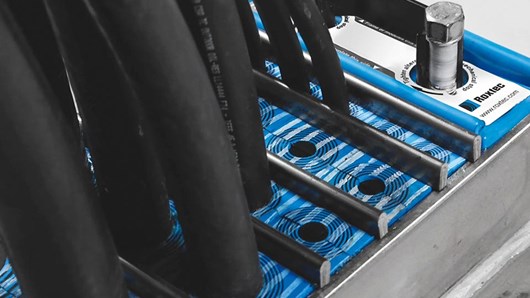We can help you protect electrical equipment against the effects of HEMP, high-altitude electromagnetic pulse. In order to raise the innovative bar and learn as much as possible, we challenge ourselves by targeting the worst. Our vision is full protection against the effect of nuclear weapon explosions in space.
“I know that we can improve the performance of our sealing system for electromagnetic shielding even further. We already have one of the best systems on earth, but we also have the knowledge from our experimenting and the ideas on how to make it better,” says Mikael Grudd, EMC specialist at Roxtec.
Mikael Grudd is one of the leading engineers exploring electromagnetic shielding possibilities in the Roxtec electromagnetic laboratory in Karlskrona, Sweden. It is an impressive area with advanced equipment for testing of electromagnetic compatibility as well as of shielding against electromagnetic interference and electromagnetic pulse. The constantly upgraded lab includes test facilities for high-voltage applications.
“We have a very high ambition level,” explains Mikael Grudd. ”We secure great test equipment to stay on top. It is important that we can test and measure on our own if we are to develop the best products.”
Fighting destructive powers
So what is the challenge that Mikael Grudd and the Roxtec EMC team are taking on? HEMP, high-altitude electromagnetic pulse, is created through a nuclear weapon detonation tens of kilometers or more from the surface of the earth. The distance is chosen depending on target area and desired disastrous effect.
HEMP does not cause chaos through the explosion, but through the three subsequent electromagnetic pulses. The first one, called E1, is short but strong and rapidly peaking. It is too fast for lightning protection devices to react on, and it breaks down sensitive microelectronics. The second pulse, E2, has characteristics similar to thunder and lightning, and its effects can be handled safely by normal lightning protection. The third, E3, is a pulse with long duration. It can last several minutes and cause heavy geomagnetic disturbance in the form of a temporary distortion of the earth’s magnetic field. Often compared to a geomagnetic storm caused by a solar flare, it is a total disaster for the critical infrastructure. It makes transformers overheat and explode – and can blow away the entire power grid. The electricity supply goes down and all modern electronics, including computers, communication systems and systems in cars and aircraft, in a very vast area risk severe damage in just a few seconds.
High risk of damage
There is also another manmade threat called NNEMP, non-nuclear electromagnetic pulse. Certain military weapons on airplanes, drones, missiles or vehicles can generate a powerful pulse without nuclear reaction. The range of the weapon counts from a few meters up to several kilometers.
It is certain that unprotected electrical systems will suffer from a HEMP or NNEMP attack. The effects and the damage can, however, be reduced and malfunction avoided if the system is encapsulated in an electromagnetic shielded volume or enclosure.
How to protect against attacks
An electromagnetic barrier or shield encasing systems and components are the most effective protection. Designed to divert and reflect the electromagnetic pulse, the barrier protects the electric equipment inside. You need to prepare the barrier or shield and all points of entry well to maintain HEMP integrity. Focus on the building – with its walls, doors, windows and ventilation – as well as on the points of entry.
- Walls must be of conductive material, and each section of the structure must have continuous electrical contact. Doors must be shielded and windows can be coated by a shielding barrier. Honeycomb ventilations are used as a filter keeping the pulse outside the barrier or shield.
- The points of entry are for cables and pipes. This requires special attention as the cables and pipes contain metallic parts that penetrate the barrier or shield. Metallic cables or pipes act as antennas absorbing electromagnetic energy on one side of the barrier or shield and transmitting them on the other side. Incorrect routing of cables and pipes jeopardizes the protection.
- Cables routed through an electromagnetic barrier need shielding to avoid that the pulse induces currents or voltages on the inner conductors containing signals or power. The cable shield needs to be connected to the barrier or shield encasing with a low impedance connection.
- Pipes routed through an electromagnetic barrier or shield should be of metal to avoid that the pulse spread through the contents. The metal will act as a shield and needs to be connected to the barrier or shield encasing with a low impedance connection.
For both cables and pipes, a 360-degree enclosing connection is preferred to efficiently protect against the pulse.
“I believe we have the ideas as well as the calculations and answers we need to develop an even better solution. We can offer an efficient protection now, but we want to make it better and easier to use,” says Mikael Grudd.
Do you want to learn more about HEMP protection?
Just enter your details and we will contact you.
Thank you!
You will receive an email shortly.
Best regards,
Roxtec
Author
Mikael Grudd
Technical Product Manager/Electro Magnetic Specialist Department Product Development & Engineering